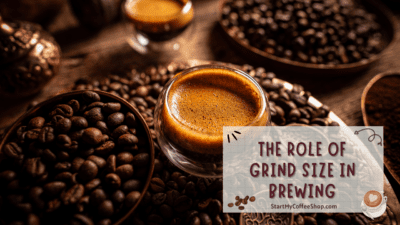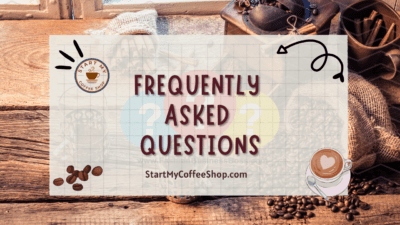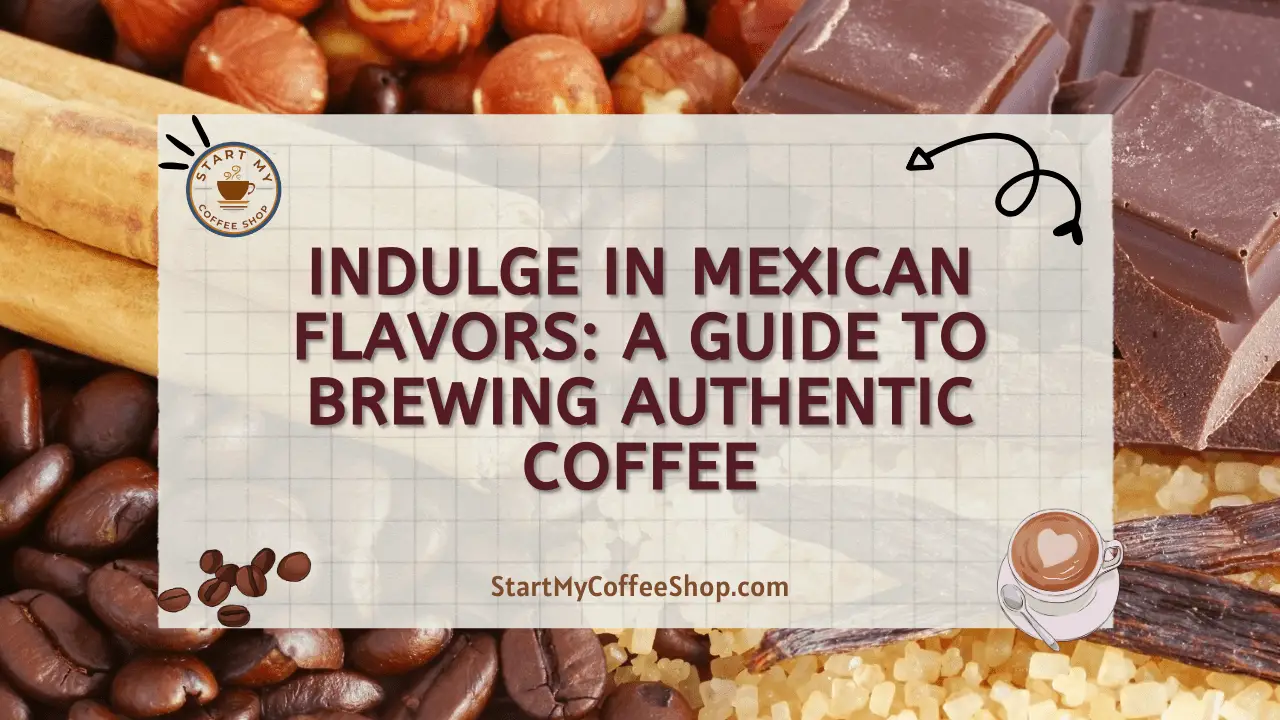Coffee, the beloved elixir of mornings and a cherished companion throughout the day, has a multitude of flavors and aromas to offer. At the heart of every exceptional coffee experience lies the humble coffee ground.
The various types of coffee grounds include coarse, medium, and fine. Coarse grounds are best suited for French press, medium for drip coffee makers, and fine for espresso machines.
In this beautiful journey, we will explore the world of coffee grounds and discover the different types that bring life to our favorite beverage. So, grab your favorite mug, and let’s dive into the captivating realm of coffee grounds.
Coarse Coffee Grounds
Coarse coffee grounds play a crucial role as the foundational element in the creation of a coffee masterpiece. Possessing a rugged, chunky texture reminiscent of rock salt, these grounds are highly favored for the renowned French press brewing method. In this process, hot water embraces the coffee grounds, allowing them to steep and release their essence slowly.
The result is a deeply satisfying and robust cup of coffee with a full-bodied flavor profile that beautifully captures the essence of the beans. Thanks to the coarse grind’s slower extraction process, every sip becomes an exquisite journey through the rich and nuanced flavors locked within the coffee grounds.
Medium Coffee Grounds
Medium coffee grounds, with their granulated sugar-like appearance and moderate size, offer a versatility that appeals to coffee enthusiasts worldwide. The go-to choice for drip coffee makers, this grind excels in delivering a balanced extraction.
The secret lies in striking the perfect harmony between surface area and brewing time, resulting in a harmonious marriage of flavors that culminates in a well-rounded and deeply satisfying cup of coffee.
The drip coffee method remains a staple in countless households for good reason. Its straightforward approach and reliable outcomes make it an accessible and user-friendly brewing technique. By simply pouring hot water over the medium coffee grounds, the flavors infuse the liquid steadily, generating a consistently delightful brew that caters to diverse palates.
Whether you prefer a morning cup to kickstart your day or a comforting sip in the afternoon, medium coffee grounds in a drip coffee maker offer a convenient and gratifying experience every time. Its versatility and ability to unlock the coffee beans’ potential make it an indispensable choice for coffee lovers seeking a balanced and flavorful brew.
Fine Coffee Grounds
For espresso enthusiasts, fine coffee grounds hold the key to a tantalizing world of bold flavors and velvety textures. With a texture akin to powdered sugar, these tiny particles work their magic when hot water courses through them.
The result is nothing short of extraordinary – a concentrated shot of espresso that forms the foundation for a myriad of delightful creations, including lattes, cappuccinos, and other espresso-based beverages.
The fine grind’s swift extraction process is a crucial factor in achieving the distinct characteristics of espresso. As hot water swiftly permeates the grounds, it draws out the essence of the coffee beans, encapsulating their rich, robust flavors in every drop. The resulting concentrated shot is a work of art, delivering an intense and invigorating caffeine kick that delights the senses.
Espresso serves as the building block for a plethora of coffee concoctions, each crafted with a stroke of creativity and a dash of artistry. From the creamy foam atop a velvety cappuccino to the intricate patterns that grace the surface of a latte, fine coffee grounds lay the foundation for these captivating masterpieces.
So, whether you crave a bold espresso shot to fuel your day or yearn for the artistic beauty of a latte, remember that it all begins with the fine coffee grounds, skillfully extracted to unlock a world of unparalleled flavors and sensory experiences.
The Role of Grind Size in Brewing
For coffee enthusiasts, delving into the intricacies of grind size and its impact on brewing methods is a thrilling journey. It is a crucial aspect that governs the very essence of our beloved beverage. Grind size directly influences the rate at which water extracts the coffee’s flavors, as well as the overall taste and mouthfeel of the final brew.

The relationship between grind size and brewing methods is like a beautiful dance, with each step playing a vital role in crafting the perfect cup. Coarser grinds take center stage in immersion methods such as the beloved French press. With their rugged texture reminiscent of rock salt, these grounds enable a longer steeping time.
As hot water embraces the coffee grounds, it gracefully extracts the flavors, resulting in a robust and full-bodied cup of coffee. The coarser grind size ensures that over-extraction is avoided, allowing the flavors to be balanced and well-rounded.
On the other end of the spectrum, we find fine grinds elegantly taking the lead in the world of espresso machines. Resembling powdered sugar, these tiny particles open the doors to a realm of bold flavors and velvety textures. The espresso machine’s quick water flow swiftly passes through the fine grounds, producing a concentrated shot of espresso. This rich and intense brew forms the foundation for a myriad of espresso-based drinks, from the classic latte to the delightful cappuccino.
As coffee enthusiasts experiment with different grind sizes, they begin to understand how this nuanced element can make or break their brewing endeavors. Mastering the art of grind size selection empowers them to unlock the true potential of their coffee beans, yielding a cup that tantalizes the taste buds and warms the soul. So, the next time you brew your coffee, remember that the grind size holds the key to the perfect symphony of flavors that awaits in every sip.
Read more about Easy Iced Coffee Magic: 8 DIY Recipes for Coffee Lovers
Coffee Grounds for Specialty Brews
The captivating world of coffee grounds expands beyond the classic trio, offering a diverse array of grind sizes curated for specific brewing methods. Specialty coffee enthusiasts have introduced unique grinds, each contributing distinct characteristics to the final cup.
- Extra Coarse Grind: Stepping up from the classic coarse grind, the extra coarse variety plays a pivotal role in the realm of cold brew coffee. Cold brew, known for its smooth and refreshing taste, involves steeping coffee grounds in cold water for an extended period. The extra coarse grind proves its worth in this process, facilitating a balanced extraction that eliminates any bitterness, resulting in a mellow and satisfying cold brew experience.
- Medium-Coarse Grind: Slightly finer than the classic medium grind, the medium-coarse variety boasts versatility and charm. This grind size is particularly favored in brewing with equipment like the Chemex or Clever Dripper. Straddling the line between immersion and drip methods, ensures a bright and flavorful cup, showcasing the intricate nuances of the coffee beans.
- Medium-Fine Grind: The medium-fine grind finds its niche in the elegant world of pour-over brewing. With pour-over methods such as the V60 or Kalita Wave, the water passes through the coffee grounds swiftly, creating a clean and nuanced flavor profile. The medium-fine grind size enables a delicate balance between extraction time and flavor intensity, unveiling the coffee’s vibrant essence in every sip.
- Turkish Grind: Leaping at the other end of the spectrum, we encounter the Turkish grind. As fine as powdered cocoa, this grind is the heart and soul of the traditional Turkish coffee brewing process. In the cherished Turkish tradition, the coffee is boiled with water and sugar, unleashing a rich and intense brew. The Turkish grind embraces spices like cardamom, infusing the beverage with delightful aromatic notes, making it an experience to cherish.
Adjusting Grind Size for Optimal Extraction
While standard grind sizes align with specific brewing methods, coffee enthusiasts frequently delve into grind adjustments to perfect the extraction process. A finer grind intensifies flavors, but there’s a delicate balance to strike, as it may lead to over-extraction and unwanted bitterness.
Conversely, coarser grinds risk under-extraction, resulting in a weaker and less flavorful cup. The quest for the ideal grind size becomes a delightful pursuit, as each adjustment unveils new dimensions of taste, bringing us closer to the blissful harmony of a truly exceptional brew.
The Art of Grinding Coffee Beans
Achieving the perfect grind is an art that lies at the heart of brewing exceptional coffee. This artistry begins with the choice of coffee grinders, which come in two primary types: blade grinders and burr grinders.
- Blade Grinders: Blade grinders operate by employing spinning blades to chop coffee beans into smaller pieces. These grinders are widely available, convenient, and budget-friendly. However, they do have drawbacks. One of the main challenges with blade grinders is their tendency to create uneven grinds.
The spinning blades can result in varying particle sizes, leading to inconsistencies during the extraction process. Some grounds may be too fine, causing over-extraction and bitterness, while others might remain too coarse, leading to under-extraction and a weaker brew.
- Burr Grinders: On the other hand, burr grinders are the gold standard for coffee connoisseurs who seek precision and consistency in their coffee grinding. These grinders employ two serrated plates, known as burrs, to crush the coffee beans. The gap between the burrs determines the grind size, and this can be adjusted according to specific brewing methods.
The result is a more uniform grind size, which ensures a consistent extraction and, consequently, a superior-tasting cup of coffee. Burr grinders allow coffee enthusiasts to unlock the full potential of their coffee beans, yielding a brew that captivates the senses with its richness and complexity.
As you venture into the world of coffee grinding, remember that the choice of grinder significantly impacts the final taste and quality of your coffee. While blade grinders offer convenience and affordability, burr grinders elevate the coffee experience to new heights, providing the precision and control needed to craft your perfect cup.
With each grind, you embark on a journey of exploration, discovering the nuances and intricacies that make coffee a truly remarkable and cherished beverage. So, whether you opt for the simplicity of a blade grinder or the precision of a burr grinder, savor the process and delight in the transformation of humble coffee beans into a delectable elixir that brightens your day.
Summary
As we conclude our journey through the world of coffee grounds, we have explored the significance of grind size in unlocking the flavors and nuances of coffee beans. From the coarse grounds of a French press adventure to the fine grounds of an espresso escapade, each type plays a crucial role in crafting our beloved beverage. As you embark on your coffee-brewing endeavors, remember to experiment, savor, and cherish the diverse tastes that coffee grounds have to offer. After all, coffee is not just a beverage; it’s a way of life.
Frequently Asked Questions

1. What is the best grind size for a French press?
For a French press, the best grind size is coarse. This allows for a slow extraction process during the steeping phase, resulting in a full-bodied and flavorful cup of coffee.
2. Can I use fine coffee grounds in a drip coffee maker?
Using fine coffee grounds in a drip coffee maker is not recommended. Drip coffee makers work best with medium grind size, as it balances the extraction process, producing a well-rounded and satisfying cup of coffee.
3. How do I achieve the perfect grind for my espresso machine?
To achieve the perfect grind for your espresso machine, opt for a fine grind size, resembling powdered sugar. This allows for a quick extraction, producing a concentrated shot of espresso with rich flavors and velvety textures.
To learn more on how to start your own coffee shop checkout my startup documents here
Please note: This blog post is for educational purposes only and does not constitute legal advice. Please consult a legal expert to address your specific needs.

Hi! I’m Shawn Chun
My adventure in coffee began when I first launched my first coffee shop back in the early 2000s. I had to figure out so many things on my own and to make it worse within 2 years of opening two large corporate coffee chains moved in just blocks away from me!
As I saw smaller and even some larger coffee shops in the neighborhood slowly lose customers to these giant coffee chains and slowly close up shop, I knew that I had to start getting creative…or go out of business.
I (like you may be) knew the coffee industry well. I could make the best latte art around and the foam on my caps was the fluffiest you have ever seen. I even had the best state-of-the-art 2 group digital Nuova Simonelli machine money could buy. But I knew that these things alone would not be enough to lure customers away from the name brand established coffee shops.
Eventually, through lots of trial and error as well as perseverance and creativity I did find a way to not only survive but also thrive in the coffee/espresso industry even while those corporate coffee chains stayed put. During those years I learned to adapt and always faced new challenges. It was not always easy, however, in the end, I was the sole survivor independent coffee shop within a 10-mile radius of my location. Just two corporate coffee chains and I were left after that year. All told the corporate coffee chains took down over 15 small independent coffee shops and kiosks and I was the last one standing and thriving.
Along the years I meet others with the same passion for coffee and I quickly learned that it is not only “how good a barista is” that makes a coffee shop successful, but the business side of coffee as well.
Hence why I started this website you are on now. To provide the tools and resources for up and coming coffee shop owners to gain that vital insight and knowledge on how to start a coffee shop successfully.
Stick around, browse through my helpful blog and resources and enjoy your stay! With lots of LATTE LOVE!
Shawn







